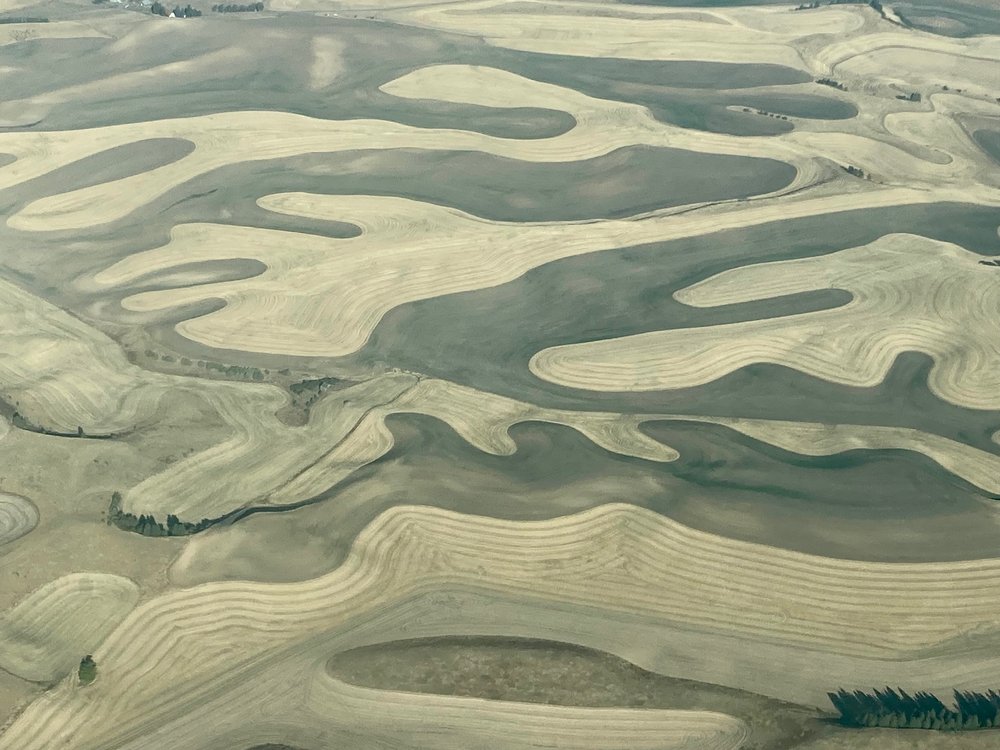Flight over Lower Snake River highlights agriculture & energy transitions

Aerial views of mainly wheat agricultural fields surround the Lower Snake River. Photo credit: IRU Staff
On October 18th, regional stakeholders and conservation partners flew over the Lower Snake River outside of Lewiston, Idaho with EcoFlight to view the landscape surrounding the river and to learn more about energy solutions for a dam replacement plan.
As momentum has continued to grow around the debate of removing the lower four Snake River dams, and both state and federal officials have addressed the issue formally this year, a key component to opposition of dam breaching involves energy and transportation transitions. The issue of specifically how to ship agricultural crops – primarily wheat – from the inland sea port town of Lewiston is an important aspect of the process, not only to economic industries spanning from the Northwest to Japan, but for local communities as well.
Staff members from Idaho Rivers United, Idaho Conservation League, Trout Unlimited, American Rivers, Shannon Wheeler, Vice Chairman of the Nez Perce Tribe, and local grain company representatives flew over the area for an hour to gain perspective of how vast and large the agricultural industry and railroads span.
“Climate change is definitely the biggest factor behind all of these issues,” said Shannon Wheeler. “But are we going to choose the dollar over a species? There are ways we can come together and I believe it will happen.”
Some energy transition projects that factor towards changing power sourcing changes from hydropower from the Lower Snake River dams have already been established, and there are more in the works. The energy services of the lower Snake River (LSR) dams are important, but increasingly variable due to climate-change impacted water conditions. These dams only produce about 925 average megawatts of electricity each year, making up about 4% of the region’s power generation, according to the Northwest Energy Coalition.
Building relationships with people on the ground is critical to come together to find common ground and instead of bi partistan opposition, we all need to find a solution to work together that benefits all species.
Stay tuned for more updates as the remaining time of 2022 will potentially give way to more action by the federal government. According to the Biden Administration, “The Biden Administration is committed to supporting development of a durable long-term strategy to restore salmon and other native fish populations to healthy and abundant levels, honoring Federal commitments to Tribal Nations, delivering affordable and reliable clean power, and meeting the many resilience needs of stakeholders across the region. The Administration commits to collaborating with affected Tribes, States, and regional stakeholders in the FMCS process and, by December 1, 2022, producing a schedule of Administration actions and critical milestones to meet the Administration’s principles and commitments described herein and which the Administration intends to pursue.”
*Special thanks to EcoFlight for this opportunity, and for ICL and TU for organizing this flight. To learn more about energy transition projects and dam replacement solutions, please visit our website’s energy page here.
This post originally appeared on News – Idaho Rivers United.


